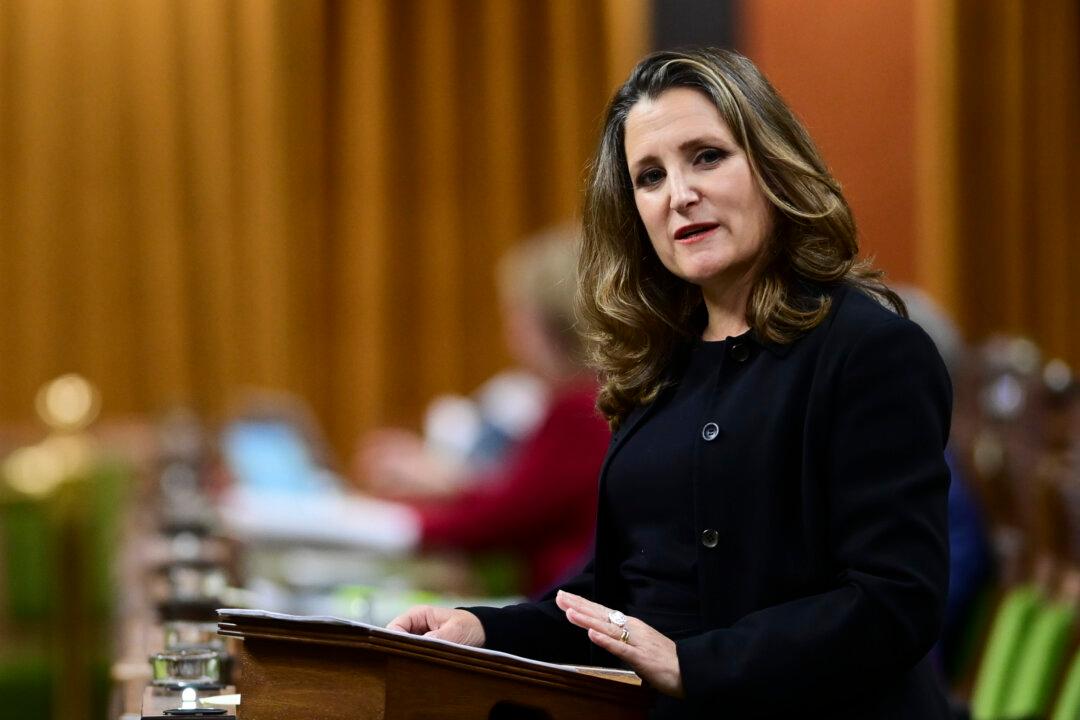The Liberal government’s fall economic statement released Nov. 30 confirmed another sizable increase in the deficit, though without including a significant spending program to grow the economy once the pandemic is under control.
The statement itself does not represent the “reset” mentioned by Prime Minister Justin Trudeau at the United Nations or the “great reset” discussed at the World Economic Forum, according to a business professor.
“I think that the government heard some footsteps and they were terrified,” Carleton University’s Ian Lee told The Epoch Times.
“It’s not the grand reset. It’s a little mini reset,” he added.
Lee said he thought the Liberals would pay a hefty political price if the deficit skyrocketed into the $400 billion to $500 billion range. Instead, the government projects a record deficit of $381.6 billion in 2020–21, which is still significantly 11 percent more than July’s $343.2 billion.
Left out of the statement was any reference to a guaranteed annual income program, which would be very expensive and was thought to be part of a larger reset of social programs.
However, universal pharmacare is in the works, as is a national child-care program, in what Finance Minister Chrystia Freeland called a “feminist agenda.”
She told reporters prior to the release of the statement that the feds have a plan to get through the winter, provide vaccines for Canadians, and build the economy back.
Freeland couched the statement as a downpayment on a larger strategy, which would be expected in Budget 2021. The feds introduces the notion of a three-year stimulus package of up to $100 billion—3 percent to 4 percent of gross domestic product (GDP)—to jump-start the economy.
“Our government will make carefully judged, targeted, and meaningful investments to create jobs and boost growth,” she said in her speech to the House of Commons. Spurring the green economy is expected to be one of the top priorities for this round of growth spending.
The Business Council of Canada took issue with the lack of a plan for the upcoming massive spending, as the statement does not say how that stimulus would spur private sector investment and the economic recovery.
“Business, not government, is the primary engine of job creation and sustainable economic growth,” said Goldy Hyder, the council’s president and CEO, in a statement.
Murky Deficit Projections
As expected, a major portion of the deficit is due to the COVID-19 response—$275.2 billion, or over 70 percent.
The government projects the deficit to drop dramatically over the following two fiscal years, to $121.2 billion in 2021–22 and to $50.7 billion in 2022–23, as the economy rebounds and the need for temporary measures fades.
But Lee says this is double-talk since it doesn’t factor in the planned growth spending over three years.
“The deficit is going to drop dramatically in the next two, three years and, by the way, we’re going to spend dramatic amounts of money, large amounts of money in the next two or three years. You aren’t going to have both,” Lee said.
The feds provided four scenarios for what the deficit might look like given various ways in which the 3 percent to 4 percent of GDP is spent. At the end of the five-year projection horizon, the deficit would be $33.4 billion compared to $24.9 billion without the growth spending.
Lee says it’s deceptive how the government is characterizing the deficit, since it is essentially splitting it off and planning more spending on top of what is already nearly a $400 billion deficit.
“You can call it pandemic relief, you can call it vaccines, you can call it stimulus, you can call it whatever label you want,” he said. “My point being that it is going to ensure that the deficit is not going to be coming down in any meaningful way.”
This three-year growth spending has not been included in the government’s deficit projections since how much is spent and when is yet unknown. More clarity is to come as vaccine rollouts begin and as the feds get closer to Budget 2021 early next year.
Freeland told reporters that the amount of the spending on growth programs should be higher than the 2.5 percent of GDP spent by the feds on the recovery after the 2008 financial crisis since the pandemic crisis is worse.





